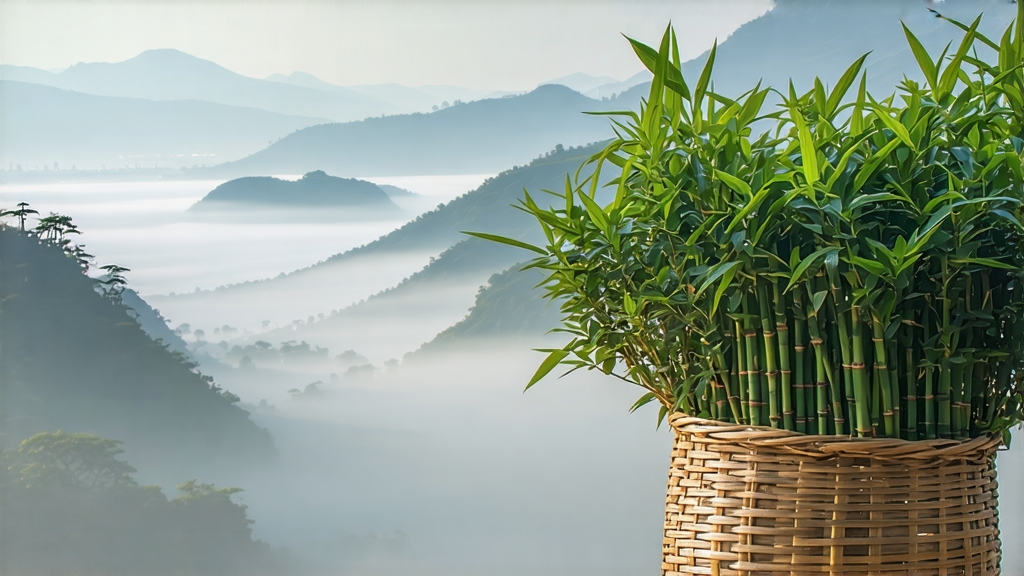
If green tea is the fresh-faced scholar of Chinese tea and pu-erh the bearded sage, then yellow tea is the quiet aristocrat who stepped out of the palace and vanished into the mountain mist. Among the handful of yellow teas that still survive, Meng Ding Huang Ya—literally “Yellow Bud from Meng Peak”—carries the most regal pedigree, yet remains almost unknown outside the small circle of growers on the mist-locked ridges of Ya’an, Sichuan. This essay invites the international reader to meet a tea that was once pressed into gold-foil bricks and carried on horseback to the Tang court, a tea whose defining “sealed yellowing” technique was kept secret inside monastery walls for seven centuries, and a tea whose soft, orchid-layered liquor can still make a modern sommelier fall silent.
-
A leaf born in the cradle of tea
Meng Ding, “the foremost of China’s famous mountains,” rises only 1 450 m, yet it is wreathed in cloud 280 days a year. The perennial humidity forces the tea bushes—mainly the local small-leaf Sichuan cultivar “chuancha”—to grow slowly, stacking amino acids and fragrant volatiles in every bud. The mountain’s Buddhist history is inseparable from its tea: in 53 CE the monk Wu Lizhen is said to have planted seven bushes on the summit, an act the Tang emperor Xuanzong later recognized by granting the area “Imperial Tea Garden” status. When tribute missions began in 724 CE, the court specified “one bud, just opened, pale yellow like goose down,” and so Meng Ding Huang Ya entered the chronicles as one of the earliest identity-protected terroir products in the world. -
From green to gold: the yellowing alchemy
Unlike green tea, where killing-green (shaqing) locks the leaf in a fresh state, yellow tea must be coaxed past oxidation’s front door, then gently pulled back. After withering for two hours in 18 °C mountain air, the buds are wok-fired at 160 °C for four minutes—just enough to destroy leaf enzymes. While still hot, they are wrapped in thick hemp cloth and placed inside a bamboo drum whose inner wall is lined with wet paper. Here the “sealed yellowing” (men huang) begins: 48–72 h at 28 °C and 85 % humidity. In this closed micro-ferment the chlorophyll slowly degrades, catechins dimerize, and a distinct methyl-butenol aroma emerges, giving the leaf a canary rim and the liquor its rounded “cooked” sweetness. A second brief firing sets the colour, followed by hand-rubbing along a bamboo screen to straighten the buds into the signature “spear” shape. The entire cycle spans five days and demands that the master read the leaf’s aroma like a clock: too little yellowing leaves a grassy edge; too much tips the tea into black-tea territory. -
Grades and micro-terroirs
Modern Meng Ding Huang Ya is divided into three grades based on picking window and elevation.- Ming-qian Imperial (before 20 March): 100 % single buds, 6 000 buds yield 100 g. Liquor is the colour of white wine with a ring of jade foam; aroma of lychee and almond tofu.
- Yu-qian Fine (before 5 April): one bud and one unfolded leaf. Slightly more vegetal, but still carrying the hallmark “steamed chestnut” note.
- Gu-yu Everyday (before 20 April): one bud and two leaves. Thicker, honey-coloured infusion, perfect for the gaiwan commuter who wants a gentle caffeine lift without astringency.
Within the mountain, micro-valleys create subtle differences. The east-facing “Cloud Temple” gardens give floral teas, while the north-facing “Dragon Gorge” plots yield maltier cups prized in Chengdu teahouses.
-
Brewing: the ritual of restraint
Yellow tea dislikes drama. Use a porcelain gaiwan of 120 ml, 3 g of leaf, and water at 80 °C. After a five-second rinse to wake the buds, steep for 45 s, 35 s, 45 s, 60 s, 90 s. The third infusion is often considered the “soul” cup: the leaf has fully opened, releasing a nectar that hovers between green tea’s